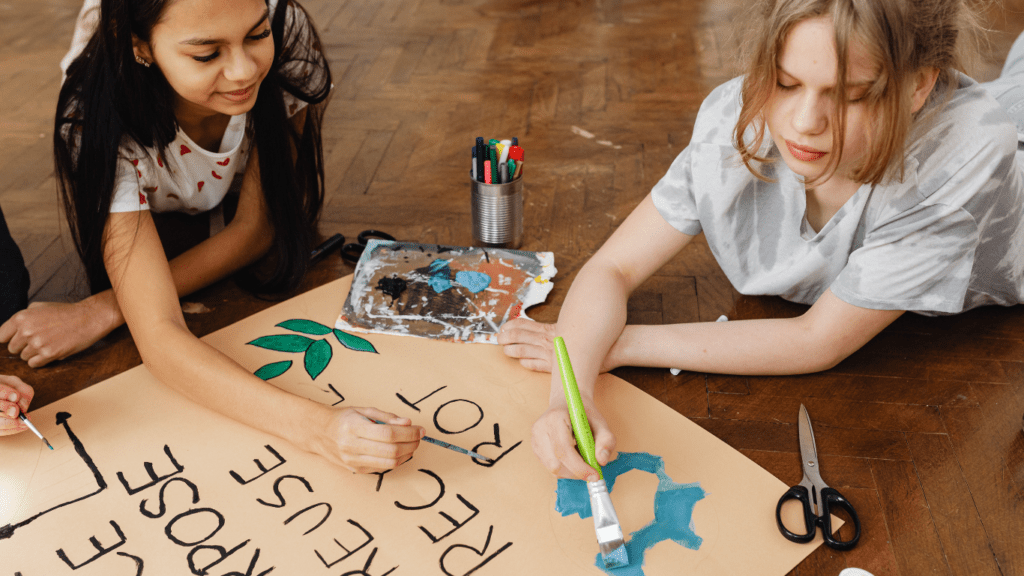Understanding Crowdfunding for Art Projects
Crowdfunding offers an avenue for artists to secure funding by engaging directly with their audience. It transforms the financial landscape for creative individuals.
What Is Crowdfunding?
Crowdfunding involves raising small amounts of money from a large number of people, typically via online platforms like Kickstarter, Indiegogo, and GoFundMe. It’s democratic, empowering creators by accessing funds without traditional gatekeepers.
- Financial Support: Artists receive funds directly from supporters, enabling them to complete projects without financial strain.
- Audience Engagement: Crowdfunding fosters a sense of community, connecting artists with their audience through regular updates and interactive campaigns.
- Marketing and Visibility: Campaigns act as marketing tools, exposing projects to a wider audience and increasing visibility.
- Feedback and Validation: Direct feedback from backers helps refine projects and provides early validation of concepts.
- Creative Freedom: Artists maintain creative control, avoiding compromises often required by traditional funding sources.
Preparing Your Campaign
Preparing a campaign for crowdfunding success involves strategic planning and careful consideration of several key factors.
Setting Realistic Goals
Setting realistic goals is crucial for a successful crowdfunding campaign. First, identify the total funding required for the project, considering all possible expenses, including material costs, labor, and distribution. For example, if you’re creating a sculpture, calculate the cost of materials, studio rental, and exhibition fees.
Setting a funding goal that’s achievable within your network’s capacity is essential. According to Crowdfunding Center’s data, campaigns with goals under $10,000 have the highest success rates. Ensure your goal reflects the minimum viable amount to bring the project to life to increase your chances of reaching it.
Choosing the Right Platform
Choosing the right platform aligns your project with the most suitable audience. Platforms like Kickstarter and Indiegogo cater to creative projects and offer extensive tools for campaign management. Assess each platform’s fee structure, audience demographics, and success rate for similar projects.
For instance, Kickstarter operates on an all-or-nothing funding model, which can motivate backers to pledge when the goal is close. In contrast, Indiegogo offers both fixed and flexible funding options, providing more flexibility depending on your project’s specifics. Understanding these differences can significantly impact the campaign’s outcome.
Crafting Your Campaign Message
Effectively crafting your campaign message can significantly impact the success of your crowdfunding campaign. Clear communication of your vision and project details will resonate with potential backers.
Telling Your Story
Your story should be authentic and compelling. Describe what inspired your art project and what makes it unique. Explain the journey and challenges you’ve faced. Use specific examples to highlight the project’s importance. Mention any previous successes or relevant experience to build credibility. Including personal anecdotes can create an emotional connection with your audience.
Visuals and Rewards
High-quality visuals are crucial for capturing interest. Use images, videos, and graphics to showcase your work. For example, include behind-the-scenes footage, project sketches, or completed pieces. Visuals should reflect the essence and quality of your art.
Offer meaningful rewards to encourage support. Tailor rewards to different pledge levels, ensuring backers feel appreciated. Examples include exclusive prints, limited edition pieces, and personalized thank-you notes. Unique, project-related rewards can enhance engagement and motivation to contribute.
Promotion Strategies
Effectively promoting your art project’s crowdfunding campaign can significantly boost its success.
Utilizing Social Media

Leverage social media to maximize your campaign’s visibility. Share frequent updates on platforms like Instagram, Twitter, and Facebook to keep potential backers informed. Use hashtags related to your project niche to reach a broader audience.
Encourage followers to share your posts to extend your reach further. Utilize platform-specific features, such as:
- Instagram Stories
- Twitter threads
to create engaging content. Collaborate with influencers or communities within your niche to tap into their audience.
Engaging With Backers
Regularly interact with your backers to build a strong community. Respond promptly to comments and messages to show appreciation and foster engagement. Provide behind-the-scenes content to make backers feel involved in the creative process.
Personalize updates to highlight milestones and express gratitude. Conduct live Q&A sessions to directly address any questions or concerns from your supporters. Consider hosting virtual events, like art showcases or live demonstrations, to maintain enthusiasm and interest throughout the campaign.
Managing Your Campaign
Effectively managing a crowdfunding campaign is crucial for its success. Artists need to stay organized and responsive throughout the campaign to maintain momentum and trust.
Updates and Communication
Regular updates keep backers engaged. I post progress reports every week, sharing milestones and any challenges faced. Transparency builds trust, encouraging backers to spread the word.
Using visual content, like photos and videos, makes updates more engaging. Personalizing updates by addressing backers by name shows appreciation. I conduct live Q&A sessions monthly, creating opportunities for real-time interaction. Virtual events, like workshops or behind-the-scenes tours, foster a sense of community and excitement.
Handling Funds and Feedback
Proper fund management ensures accountability. I maintain detailed records of all transactions and allocate funds according to the project plan. Using budgeting tools to track expenses helps avoid overspending.
I prepare for unexpected costs by setting aside a contingency fund. Responding to feedback promptly demonstrates professionalism. I acknowledge both positive and negative feedback, using constructive criticism to make improvements. By showing that I value backers’ opinions, I foster a supportive and loyal community.
Successful Crowdfunding Case Studies
Analyzing successful art campaigns reveals common strategies that can boost your project’s chances. These instances provide insights into goal-setting, promotion, and engagement.
Analysis of Successful Art Campaigns
One standout example is Amanda Palmer’s Kickstarter campaign, which raised $1.2 million for her album and tour. She set realistic goals, engaged existing fans through personalized communication, and provided exclusive behind-the-scenes content. Palmer offered varied reward tiers, from digital downloads to private concerts. This strategy attracted diverse backers.
Another example is The Veronica Mars Movie Project on Kickstarter. They raised $5.7 million by leveraging an existing fanbase and offering meaningful rewards, such as digital copies and film screenings. Regular updates and live Q&A sessions kept backers engaged, showing transparency and responsiveness.
Lastly, “The Art of Asking” campaign by Neil Gaiman and Chris Riddell demonstrated effective collaboration. They raised $1 million using combined fanbases, social media promotions, and unique reward tiers, including signed art prints and invitations to exclusive events. Their campaign highlighted the power of cross-promotions.

 Leonerico Vaughan, as both an author and collaborator in the development of Avant Garde Artistry Hub, brings a unique perspective to the platform. His contributions center around the intersection of art and technology, offering artists valuable insights into the latest creative tools and techniques. Leonerico’s passion for innovation shines through in his work, helping to keep the artistic community informed and empowered.
In addition to his writing, Leonerico has played a key role in shaping the platform’s resources, particularly those focused on helping artists build sustainable careers. His dedication to the success of Avant Garde Artistry Hub makes him a vital part of its mission to support and inspire modern artists.
Leonerico Vaughan, as both an author and collaborator in the development of Avant Garde Artistry Hub, brings a unique perspective to the platform. His contributions center around the intersection of art and technology, offering artists valuable insights into the latest creative tools and techniques. Leonerico’s passion for innovation shines through in his work, helping to keep the artistic community informed and empowered.
In addition to his writing, Leonerico has played a key role in shaping the platform’s resources, particularly those focused on helping artists build sustainable careers. His dedication to the success of Avant Garde Artistry Hub makes him a vital part of its mission to support and inspire modern artists.